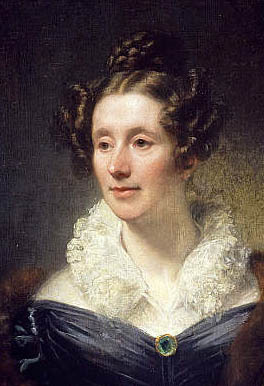The new Cosmos series with astronomer Neil deGrasse Tyson at the helm is only the most recent of a long line of larger-than-life science popularizers, many of whom have long since been forgotten, though their legacy lives on. One thing they all share in common: They are all men!
During the last half of the 20th century we had Carl Sagan, Stephen Hawking,
Stephen Jay Gould, and Isaac Asimov with Don Herbert's Watch Mr. Wizard in the 1950s pioneering the use of the television to make science visually exciting to children. This is a legacy inherited by Bill Nye who became famous in the 1990s as Bill Nye the Science Guy.
During the first half of the 20th century we had J. B. S. Haldane, George Gamow, Sir James Jeans and Albert Einstein. Austin Clark's weekly talk show between 1923-1926 was a pioneer in using the radio to communicate science to the public. Earlier still we had Garrett Putnam Serviss and Richard Proctor who wrote and lectured on astronomy in the late-1800s. Proctor was actually a professional astronomer and member of the Royal Astronomical Society in England.
Philip Henry Gosse's 1853 book Naturalist Rambles on the Devonshire Coast led to the aquarium becoming a popular addition to everyone's homes. Around this time, dinosaurs became popular and many exhibitions displayed life-sized models of these extinct reptiles. The miracles of science including the telegraph and the transatlantic cables spurred on a growing public interest in science and technology. Spectacles such as the Aurora Borealis, and the Transits of Venus were followed intently and published on the front pages of the New York Times, written by staff writers who perfected the style of interviewing scientists for their opinions and explanations.
The rise of British popularizations occurred in a contentious time when most science popularizers were charlatans and merely in it for the showmanship. The second half of the 19th century saw a burgeoning army of non-scientist, science popularizers who were often well-intended but generally unable to field with depth many of the questions posed to them in topic areas they had not specifically prepared for.
According to Bernhard Lightman's recent book Victorian Popularizers of Science, by the beginning of the 19th century, such figures as Charles Lyell, Adam Sedgwick, Charles Babbage, and Humphry Davy adhered to an ideal of gentlemanly science based on a conception of a hierarchical society, masculine authority, and government by an Anglican, aristocratic elite. These claims, championed by Thomas Henry Huxley were resisted by popularizers who belonged to groups Huxley and his colleagues were trying to edge out of science; namely women and Christian ministers.
Rosina Zornlin, Jane Loudon, Anne Pratt, Elizabeth Twining, Lydia Becker, Margaret Gatty, Mary Ward, Agnes Giberne, Agnes Clarke, and Eliza Brightwen published widely on physical geography and geology, on botany, on evolutionary theory and natural history, on scientific instruments such as the microscope and telescope, on astronomy, and, more generally, on short stories designed to teach children scientific, as well as moral, lessons.
Mary Somerville was a Scottish science writer and polymath in the early-1800s, a time when women's participation in science was discouraged. She studied mathematics and astronomy, and was nominated to be jointly the first female member of the Royal Astronomical Society at the same time as Caroline Herschel. More recently, Mary Proctor authored many articles for newspapers and journals in the early-1900s, and wrote a number of popular books on astronomy. The crater Proctor on the Moon was named after her. The one on Mars was named after her father, Richard!
The 20th century produced such important women science popularizers as Rachel Carlson who wrote the incredibly influential book The Silent Spring. Lynn Margulis wrote many popular books on the early evolution of life, the Gaia Hypothesis, cellular symbiosis and climate change. There is also the acclaimed primatologist Jane Goodall whose popularizations of primate research include dozens of books for adults and children, as well as numerous appearances in TV and video programs.
Despite the British stigma held over from the 1800s that women popularizers may not be as authoritative as the male of the species, the fact remains that there are a growing number of women scientists and journalists whose efforts stand fully toe-to-toe with their male colleagues, though the plethora of popularizers writing about the physical science since 1950s has biased our view in favor of men who still dominate these fields. Yet even in the physical science women science popularizers are a force to be reckoned with.
For every Brian Greene who has deservedly become famous for his popularizations of string theory, there is a Lisa Randall whose brilliant work in brane theory has led to her highly readable accounts in books such as the 2011 Knocking on Heavens Dooras well as in a growing repertoire of TV and radio appearances.
For every Brian Cox at the University of Manchester who appears in the popular BBC TV series Wonders of the Universe, there is an astronomer like Michelle Thaller at NASA who has been featured in National Geographic's Naked Science, the History Channel's TV series The Universe, and is a regular contributor to the Christian Science Monitor for which she writes a monthly science column.
In as much as it is easy to select male popularizers for coveted roles in spectacular TV series, there are also women who deserve to be selected as often. For my tastes in science popularization in the 21st century, I find women's contributions to this art a welcomed breath of fresh air!
